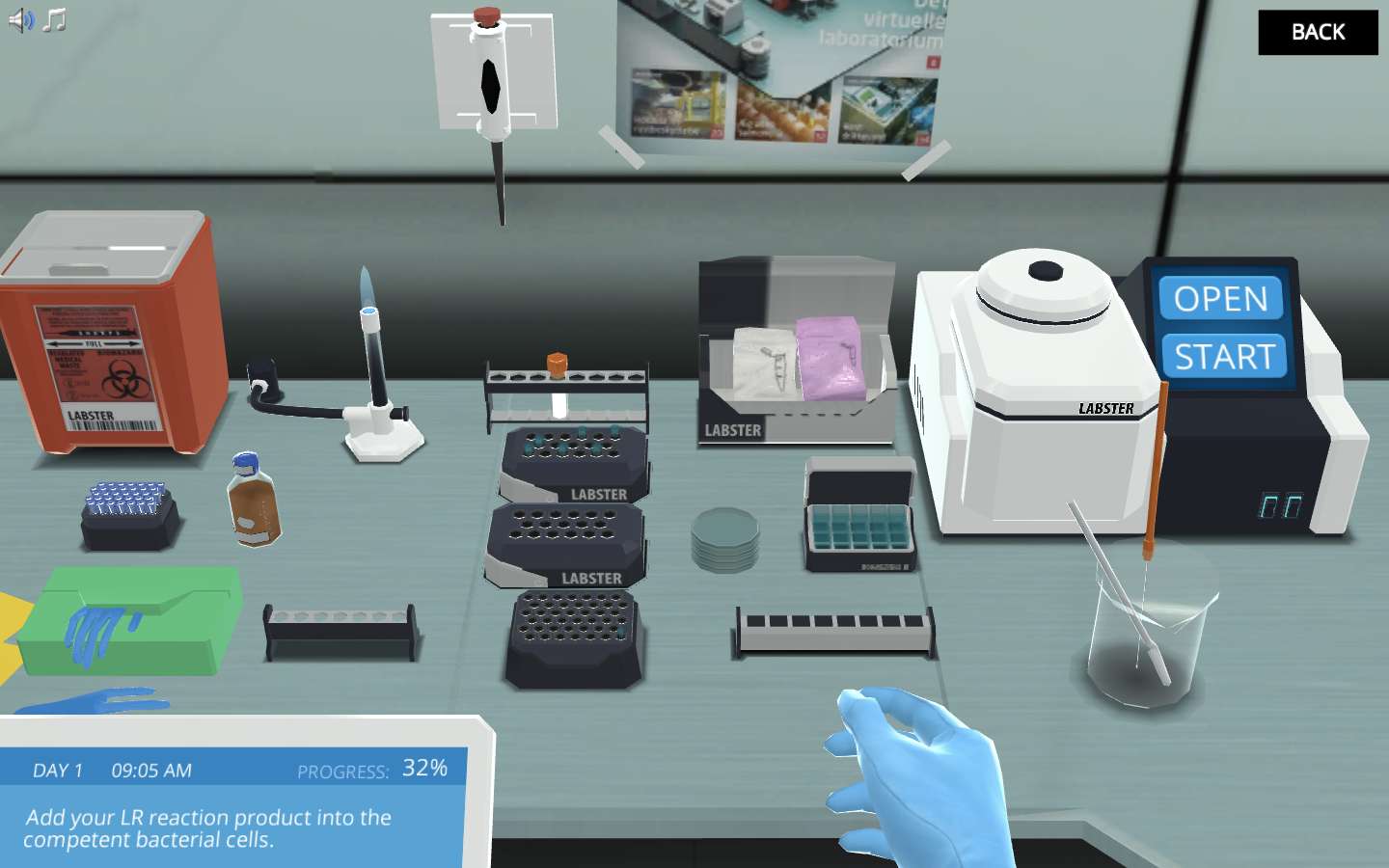Heading 1
Heading 2
Heading 3
Heading 4
Heading 5
Heading 6
Lorem ipsum dolor sit amet, consectetur adipiscing elit, sed do eiusmod tempor incididunt ut labore et dolore magna aliqua. Ut enim ad minim veniam, quis nostrud exercitation ullamco laboris nisi ut aliquip ex ea commodo consequat. Duis aute irure dolor in reprehenderit in voluptate velit esse cillum dolore eu fugiat nulla pariatur.
Block quote
Ordered list
- Item 1
- Item 2
- Item 3
Unordered list
- Item A
- Item B
- Item C
Bold text
Emphasis
Superscript
Subscript
About This Simulation
Join cutting edge research at MIT and design a biological circuit that can sense and destroy cancer cells.
Learning Objectives
- Engineer natural systems to perform specific functions
- Describe the fundamentals of the Gateway cloning technique and design your own biological circuit
- Explain and perform bacterial transformation, antibiotic selection and plasmid purification
- Explain and perform a restriction digest of your cloning product
About This Simulation
Lab Techniques
- Gel electrophoresis
- Restriction digest
- Electroporation
- Antibiotics selection
- Plasmid isolation with purification columns
- Gateway cloning technique
- Sterile technique
Related Standards
- No direct alignment
- No direct alignment
- No direct alignment
Learn More About This Simulation
Use the specific microRNA profile of cancer cells to design an apoptotic biological circuit that is only activated in cancer cells. You are the only hope for a patient with a rare form of cancer.
Learn how to use the Gateway cloning technique
In the Synthetic Biology simulation, you will learn how to use the Gateway cloning technique to combine different genetic modules in an expression vector. You will learn how the Gateway cloning technique can be used to efficiently combine these modules. Use electroporation to transform the bacteria with your vector of interest and select successful transformants. You will learn all about the basics of sterile lab work and bacterial selection.
Extract and isolate plasmids
Your next task in the lab will be to grow the transformed bacteria and extract the plasmids using a ‘miniprep’ kit. You will learn how different buffers enable you to isolate plasmid, and not genomic, DNA from the cells. You will check if the plasmid, indeed, contains your circuit, and if it is mutation-free by digesting it with restriction enzymes and by using gel electrophoresis. In the end you will test your circuit in living cells to see if the cancer cells are the only cells that die.
Will you be able to find a cure for this rare form of cancer?
For Science Programs Providing a Learning Advantage
Boost STEM Pass Rates
Boost Learning with Fun
75% of students show high engagement and improved grades with Labster
Discover Simulations That Match Your Syllabus
Easily bolster your learning objectives with relevant, interactive content
Place Students in the Shoes of Real Scientists
Practice a lab procedure or visualize theory through narrative-driven scenarios


FAQs
Find answers to frequently asked questions.
Heading 1
Heading 2
Heading 3
Heading 4
Heading 5
Heading 6
Lorem ipsum dolor sit amet, consectetur adipiscing elit, sed do eiusmod tempor incididunt ut labore et dolore magna aliqua. Ut enim ad minim veniam, quis nostrud exercitation ullamco laboris nisi ut aliquip ex ea commodo consequat. Duis aute irure dolor in reprehenderit in voluptate velit esse cillum dolore eu fugiat nulla pariatur.
Block quote
Ordered list
- Item 1
- Item 2
- Item 3
Unordered list
- Item A
- Item B
- Item C
Bold text
Emphasis
Superscript
Subscript
A Labster virtual lab is an interactive, multimedia assignment that students access right from their computers. Many Labster virtual labs prepare students for success in college by introducing foundational knowledge using multimedia visualizations that make it easier to understand complex concepts. Other Labster virtual labs prepare learners for careers in STEM labs by giving them realistic practice on lab techniques and procedures.
Labster’s virtual lab simulations are created by scientists and designed to maximize engagement and interactivity. Unlike watching a video or reading a textbook, Labster virtual labs are interactive. To make progress, students must think critically and solve a real-world problem. We believe that learning by doing makes STEM stick.
Yes, Labster is compatible with all major LMS (Learning Management Systems) including Blackboard, Canvas, D2L, Moodle, and many others. Students can access Labster like any other assignment. If your institution does not choose an LMS integration, students will log into Labster’s Course Manager once they have an account created. Your institution will decide which is the best access method.
Labster is available for purchase by instructors, faculty, and administrators at education institutions. Purchasing our starter package, Labster Explorer, can be done using a credit card if you are located in the USA, Canada, or Mexico. If you are outside of North America or are choosing a higher plan, please speak with a Labster sales representative. Compare plans.
Labster supports a wide range of STEM courses at the high school, college, and university level across fields in biology, chemistry, physics, and health sciences. You can identify topics for your courses by searching our Content Catalog.













